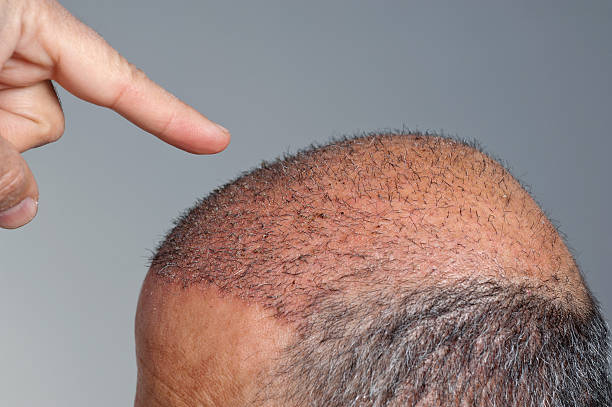Hair Loss Explained: Causes, Prevention & Treatments
Hair loss affects people of all genders and ages, from subtle thinning to noticeable bald patches. This guide explains why hair falls out, how to spot early signs, and the prevention and treatment options—from at-home care and medications to clinical therapies and surgery. Learn practical steps to protect your hair and when to seek professional help, including information on minoxidil, finasteride, PRP, and transplants to help you make informed decisions.

Hair loss is a common concern that can affect confidence and quality of life. Whether you notice daily shedding, a broader part, or a retreating hairline, understanding what triggers hair thinning and the options to manage it can make a big difference. Early recognition and appropriate care often lead to better outcomes, so knowing what to look for and what treatments are available is vital.
Spotting early signs of thinning
Catching hair loss early improves the chance of slowing or reversing it. Typical early indicators include more hairs left on your brush, a part that seems to widen over time, or an increasingly visible scalp through your hair. While normal daily shedding ranges from about 50 to 100 hairs, a noticeable increase beyond that or sudden clumps falling out could signal an underlying issue. To monitor changes reliably, perform routine scalp checks and take periodic photos from the same angles to track progression.
Why hairlines recede
A receding hairline usually begins at the temples and gradually moves backward. The most frequent cause for this pattern is androgenetic alopecia, often called male or female pattern hair loss. The hormone dihydrotestosterone, or DHT, which is produced from testosterone, is a key factor in follicle miniaturization in genetically predisposed individuals. Genetics and age are primary drivers, but lifestyle and environmental factors like chronic stress, certain medications, poor nutrition, and aggressive hairstyling or chemical treatments can speed up recession.
Gentle brushing and hair care to reduce breakage
Small adjustments to your daily routine can protect fragile hair. Choose brushes that match your hair type and avoid pulling or tugging. Start detangling from the ends and work up toward the roots to minimize breakage and lessen tension on follicles. Hair is more fragile when wet, so skip vigorous brushing after washing; instead, use a wide-toothed comb and be gentle when detangling. Also limit tight hairstyles, heat styling, and harsh chemical processes, all of which can weaken hair and exacerbate shedding.
Treatment options and professional interventions
There are numerous ways to address hair loss, ranging from topical over-the-counter products to prescription medications, in-office procedures, and surgical solutions. Which route is appropriate depends on the cause, severity, and your health profile.
| Treatment Type | Average Cost | Expected Results |
|---|---|---|
| Minoxidil (topical) | $20-45/month | Can promote moderate regrowth within 4 to 6 months for some users |
| Finasteride (oral, prescription) | $50-75/month | Often slows progression and may lead to partial regrowth in men |
| PRP (platelet-rich plasma) | $500-2500/session | Results vary; multiple sessions usually required to see improvement |
| Hair transplant (FUE or FUT) | $4000-15000/procedure | Surgical and typically long-lasting, with permanent repositioning of follicles |
Prices, rates, or cost estimates mentioned in this article are based on the latest available information but may change over time. Independent research is advised before making financial decisions.
Topical minoxidil is widely available and can help many people achieve noticeable regrowth, though results vary and continued use is usually necessary to maintain benefits. Finasteride is a prescription medication that blocks the conversion of testosterone into DHT and is effective for many men, but it may carry side effects and is not typically recommended for women of childbearing potential. PRP therapy involves injections of concentrated platelets derived from your own blood to stimulate hair follicles; outcomes are inconsistent and multiple treatments are often recommended. Hair transplantation reallocates healthy follicles from dense areas to thinning zones and can provide durable coverage, but it requires a skilled surgeon and recovery time.
Choosing the right therapy often involves collaboration with a dermatologist or hair restoration specialist. A clinician can diagnose the underlying cause—whether genetic, hormonal, autoimmune, nutritional, or due to medications—and recommend targeted interventions. Blood tests, scalp examinations, and sometimes scalp biopsies help pinpoint the reason and guide treatment selection.
Practical prevention and lifestyle tips
While not all forms of hair loss are preventable, a few habits can help preserve hair health. Maintain a nutrient-rich diet with adequate protein, iron, vitamin D, and other micronutrients. Manage stress through sleep, exercise, and relaxation techniques, since chronic stress can trigger shedding. Treat your hair gently: avoid excessive heat, tight styles, and overuse of chemical treatments. If you notice rapid or patchy hair loss, consult a professional promptly—early action increases the chance of a favorable response.
When to seek professional help
If you observe persistent changes in hair density, sudden or patchy hair loss, scalp irritation, or hair loss accompanied by other concerning symptoms, see a healthcare provider. A specialist can assess whether medical treatment, testing, or procedural options are appropriate and can help set realistic expectations based on your type of hair loss.
This article is for informational purposes only and should not be considered medical advice. Please consult a qualified healthcare professional for personalized guidance and treatment.






